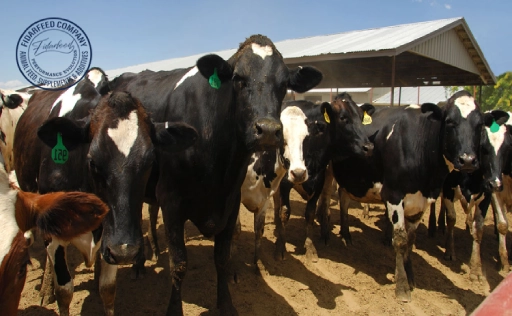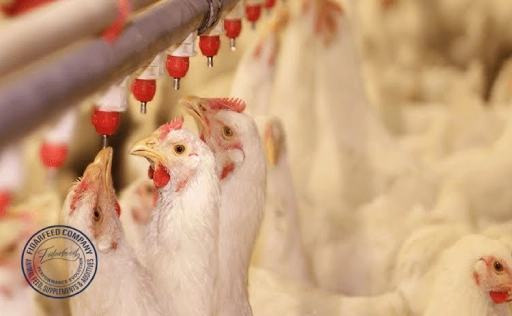Why Recognizing Signs of Stress in Cows Matters More Than You Think
Signs of stress in cows are more than just fleeting reactions to discomfort; they can indicate deeper health, environmental, or management issues. Early recognition is crucial. A stressed cow won’t eat properly, produce as much milk, or reproduce efficiently. Over time, that impacts your entire operation—economically and ethically. Whether you manage a small family farm or a large-scale operation, identifying stress early can make the difference between a thriving herd and one plagued by persistent problems.
Common Physical Signs of Stress in Cows: What to Look For
Physical cues are often the first indicators of distress. Look for weight loss, rapid or labored breathing, excessive drooling, or visible trembling. Even posture matters.
Learn more about: Probiotic Supplement for Aquatic Animal
A cow that stands with an arched back or lays down too often may be in discomfort. Hair coat condition can deteriorate, and cows may exhibit poor grooming behavior. Recognizing these physical signs gives you a direct window into your animal’s health and well-being.
Behavioral Changes: Subtle Signs of Stress in Cows You Might Miss
Behavioral signs can be trickier to spot but are just as critical. Increased aggression, restlessness, frequent vocalization, or withdrawal from the herd are all red flags.
Learn more about: The Complete Guide: How to Run a Successful Sheep Farm
For example, if a normally docile cow becomes irritable or isolates herself, something is off. Changes in eating habits or repetitive behaviors like pacing are also indicators that shouldn’t be ignored. Tracking these behaviors over time can help you spot trends that point to stressors in your system.
Environmental Stressors: How Heat, Noise, and Housing Affect Your Herd
Environmental conditions play a major role in cow comfort. High temperatures and humidity can lead to heat stress, while poor ventilation in barns can trap harmful gases like ammonia. Excessive noise, whether from machinery or frequent human traffic, may also agitate the herd.
Cows are sensitive to their surroundings. Ensuring clean, quiet, and comfortable housing with adequate space and shade is fundamental to reducing stress.

Nutritional Triggers: Can Feed Cause Signs of Stress in Cows?
Absolutely. Inconsistent feeding schedules, poor-quality forage, or lack of access to clean water can be significant stressors. Nutritional deficiencies, particularly in minerals like magnesium or calcium, may result in metabolic disorders that manifest as stress symptoms.
Learn more about: How to Treat Arthritis in Chickens: Key Strategies for Healthier Breeder Birds
Keeping feeding routines predictable and using balanced rations tailored to the age and function of your cows is critical.
Social Dynamics: Understanding Cow-to-Cow Interaction and Stress
Cows are social animals with a defined hierarchy. Overcrowding disrupts this natural order and leads to aggression and competition for resources. Introducing new animals can create tension, especially if done abruptly.
Learn more about: Meat and Bone Meal for Poultry: Affordable Alternative to Soybean Meal
Understanding herd dynamics and making changes gradually can prevent conflict and maintain peace. It’s also wise to observe how cows interact during feeding and resting times to identify potential social stressors.

Signs of Stress in Calves vs. Adult Cows: What’s Different?
Stress in calves often appears as scours (diarrhea), poor weight gain, or reduced activity levels. They may also suckle poorly or show signs of respiratory illness. In contrast, adult cows show more behavioral and production-based symptoms.
Learn more about: Holsteiner Horses: Strength and Stamina for Heavy Work
Younger animals are more sensitive to changes in environment and handling, so early socialization and consistent care are key to minimizing stress.
How to Reduce Stress in Cows: Practical, Farm-Tested Solutions
Start with the basics: consistent routines, gentle handling, and well-maintained housing. Provide clean bedding, shade, and shelter from wind or rain. Use low-stress handling techniques like slow movements and quiet voices.
Learn more about: TMR Silage Production: A Farm-to-Feed Process
Minimize transportation and avoid sudden changes to feed or group structure. Some farmers install brushes or scratchers in pens—small additions that can significantly reduce boredom and frustration.

Long-Term Impact of Stress: Health, Fertility, and Milk Production
Chronic stress wears down a cow’s immune system, making her more susceptible to illness and injury. Fertility declines, as hormonal imbalances interfere with ovulation and conception. In dairy herds, stress reduces milk yield and can affect milk quality.
Learn more about: Your Guide to Selecting a Reliable Animal probiotic manufacturers
Financial losses stack up quickly, not only from decreased production but also from increased veterinary costs and culling rates.
When to Call the Vet: Recognizing Serious Stress-Related Health Issues
If physical or behavioral symptoms persist despite your efforts, it’s time to involve a veterinarian. Conditions like ketosis, mastitis, or displaced abomasum can all be stress-induced and require medical treatment.
A vet can also help identify nutritional gaps or underlying infections contributing to stress. Don’t wait until it’s too late—early intervention can save both animals and money.

Monitoring Tools and Technology to Track Stress in Cows
Technology now offers powerful ways to monitor stress. Wearable collars and ear tags can track activity levels, rumination, and even temperature.
Learn more about: Boosting Broiler Breeder Egg Production: A Comprehensive Lighting Guide
Thermal cameras and accelerometers provide real-time data, allowing farmers to detect changes before symptoms become visible. Integrated herd management systems can help identify patterns across the entire herd, leading to better decisions and improved outcomes.
Building a Low-Stress Farm Culture: Training, Habits, and Mindsets
Stress management isn’t just about cows; it’s about people too. Train your staff in low-stress handling and ensure everyone understands the importance of calm, consistent behavior. Develop routines that benefit both animals and workers.
Learn more about: Coccidiosis in Broiler Chickens: Causes, Prevention, and Treatment
Foster a culture of observation and care, where small issues are addressed before they escalate. A low-stress environment improves animal welfare, farm efficiency, and team morale.

Conclusion
Recognizing the signs of stress in cows is a vital skill for any farmer. From physical symptoms and behavioral changes to environmental and nutritional triggers, stress can come from many sources. By staying observant and proactive, you can catch problems early and keep your herd healthy and productive. Remember, a calm cow is a happy cow—and a happy cow means a successful farm.
Have thoughts, questions, or tips of your own? Share them in the comments below and join the conversation with fellow cow breeders. Your input matters!





